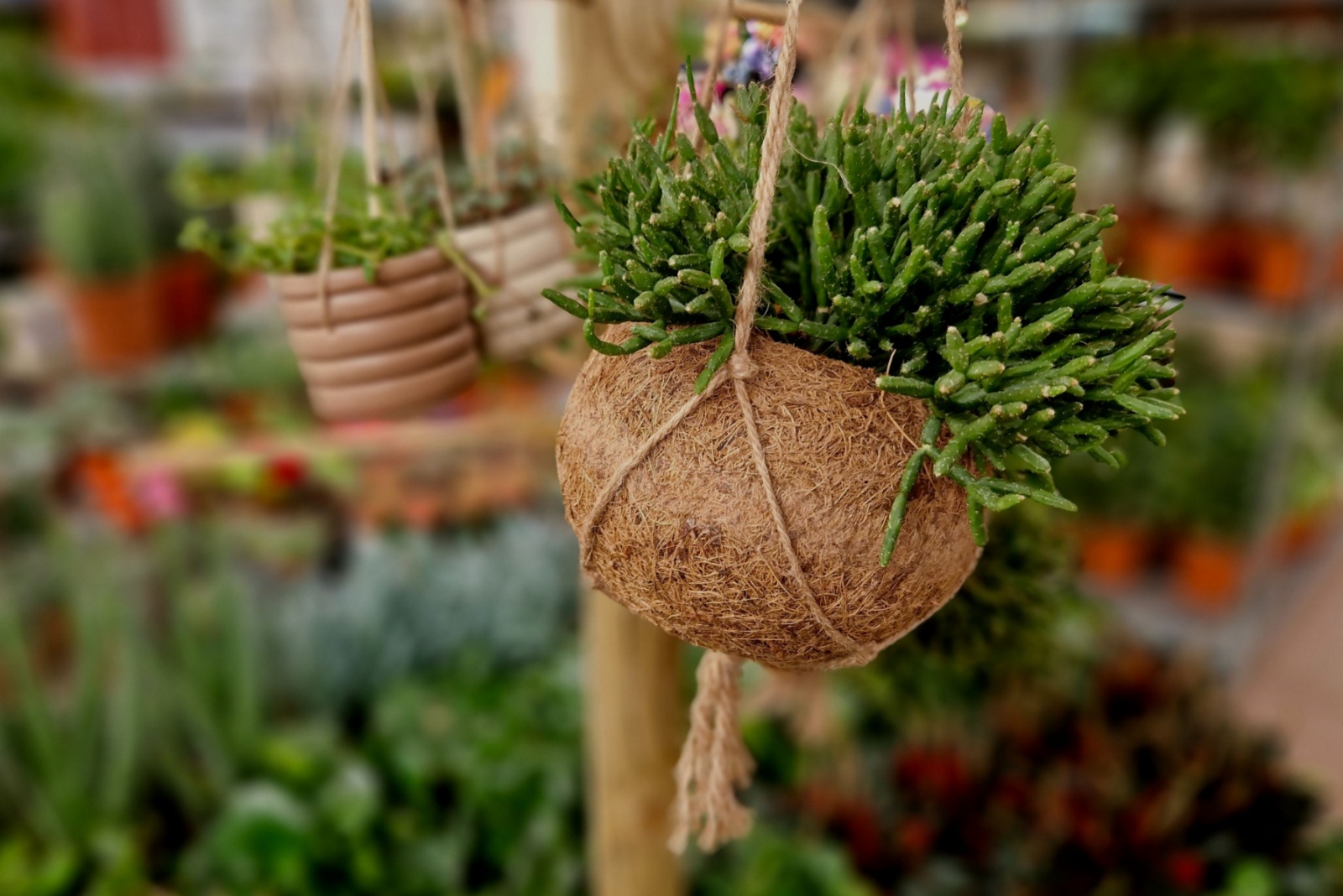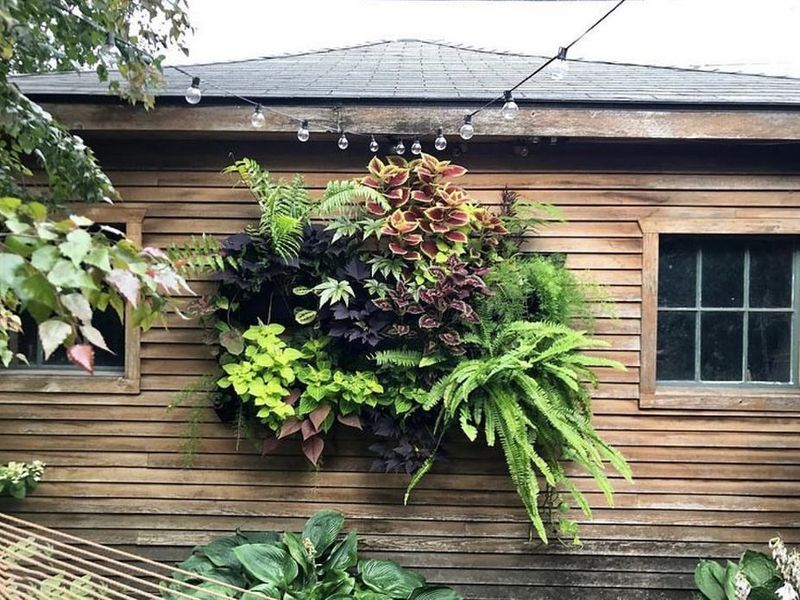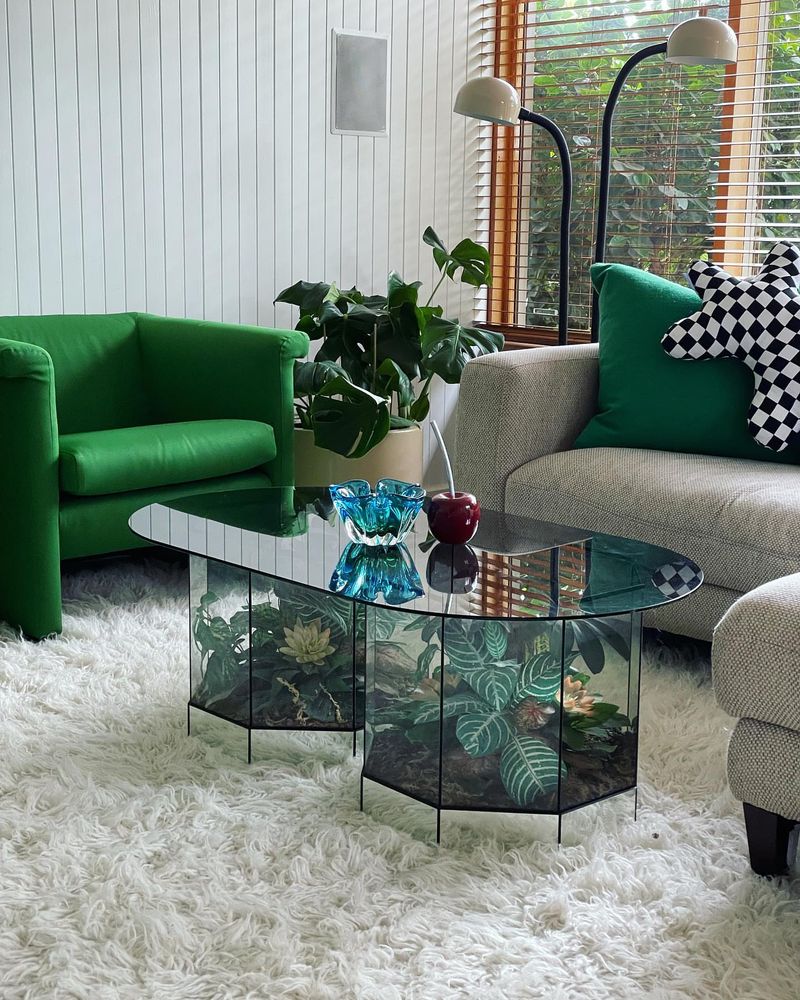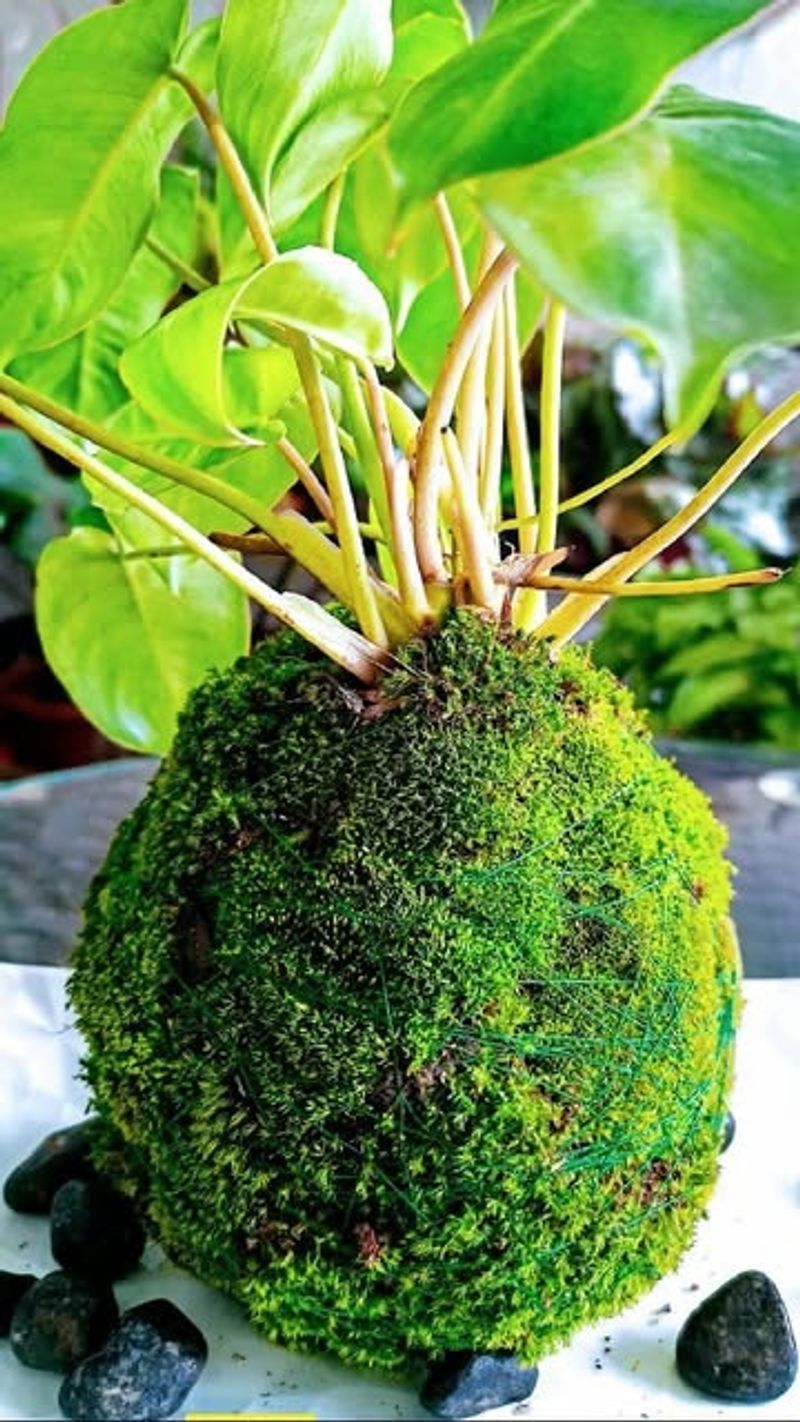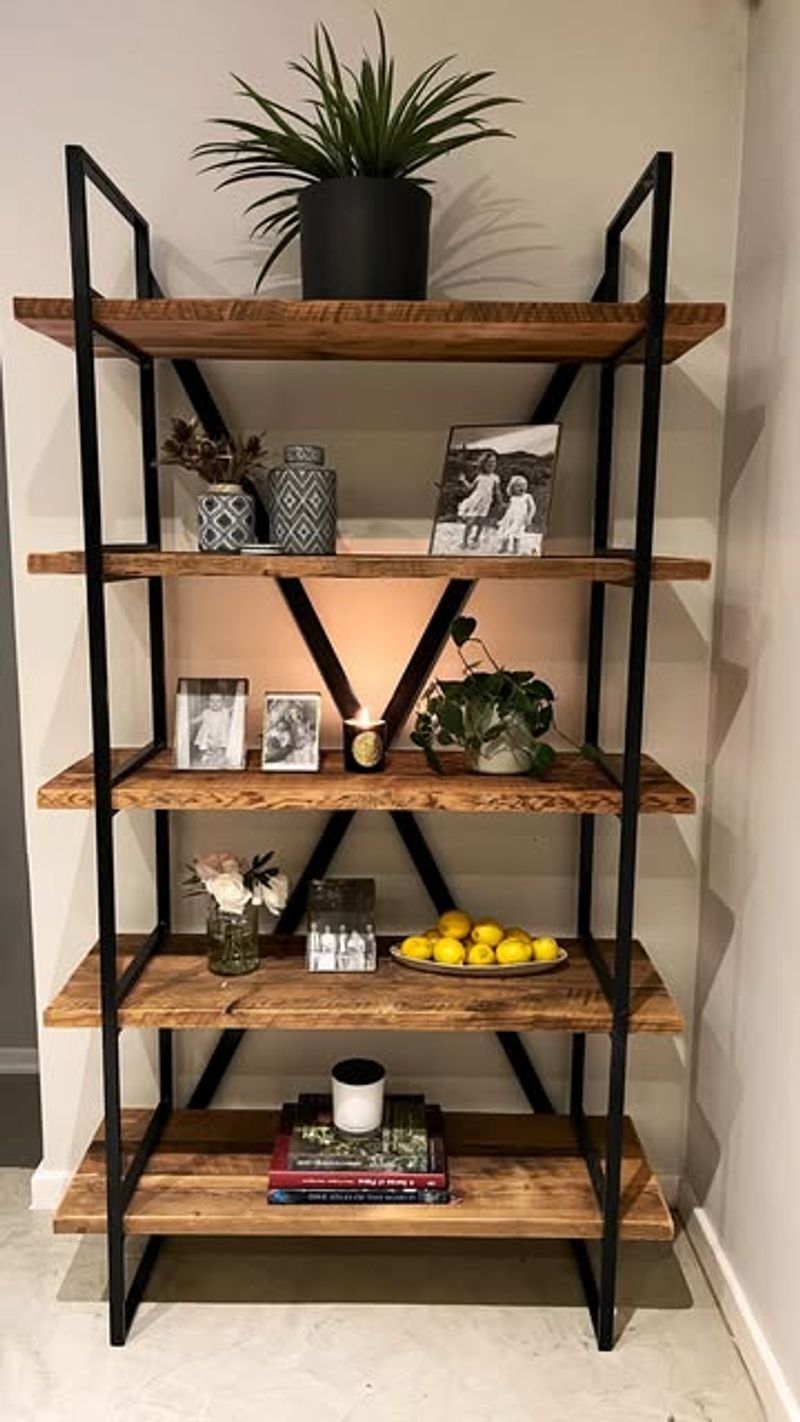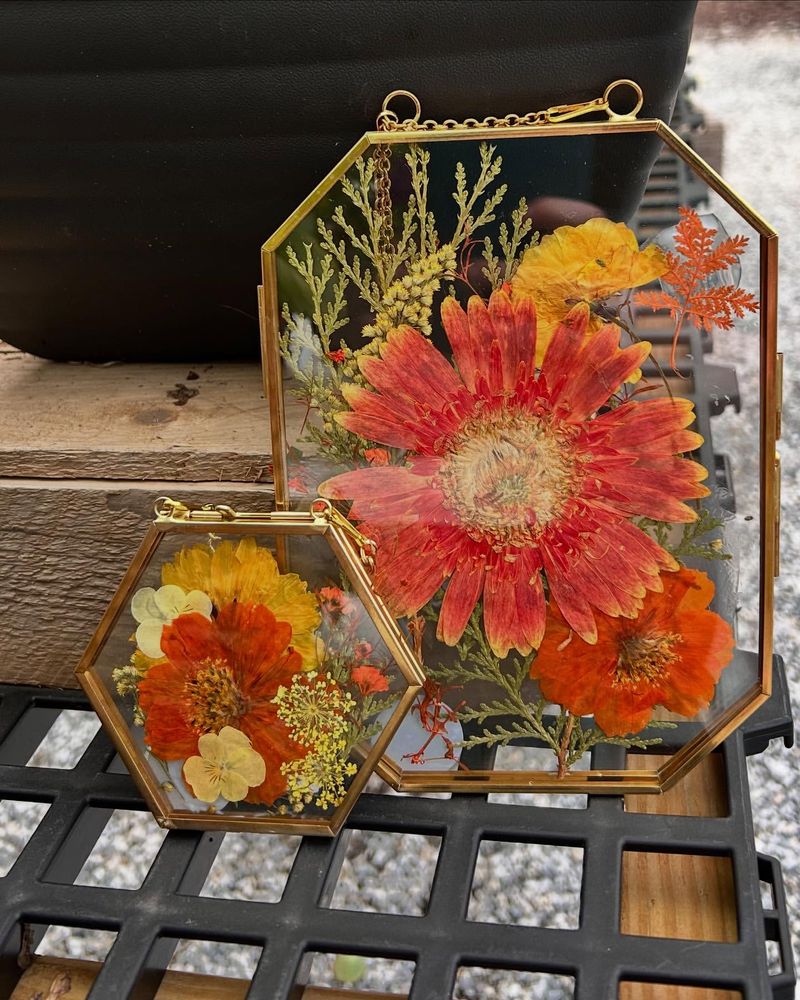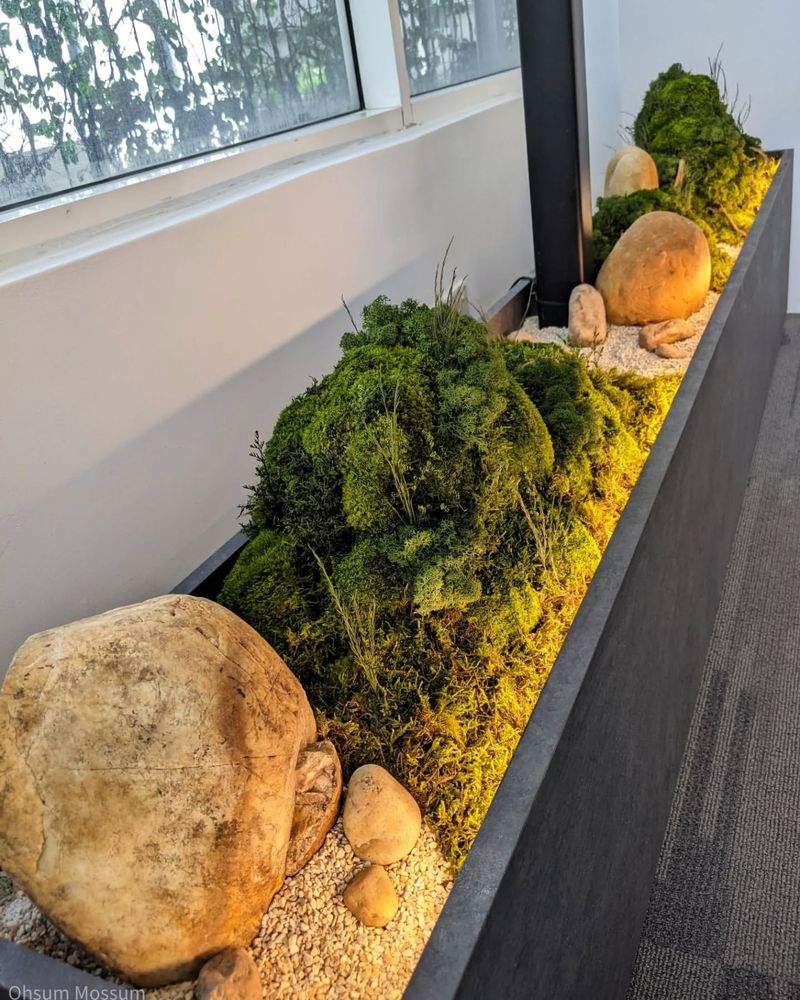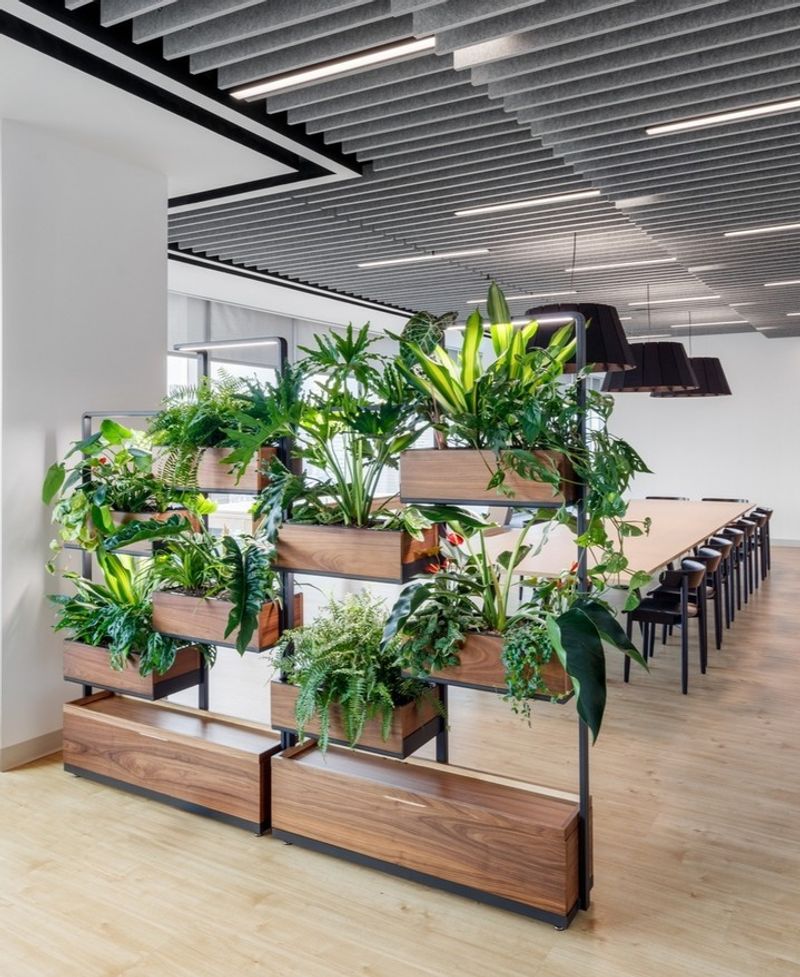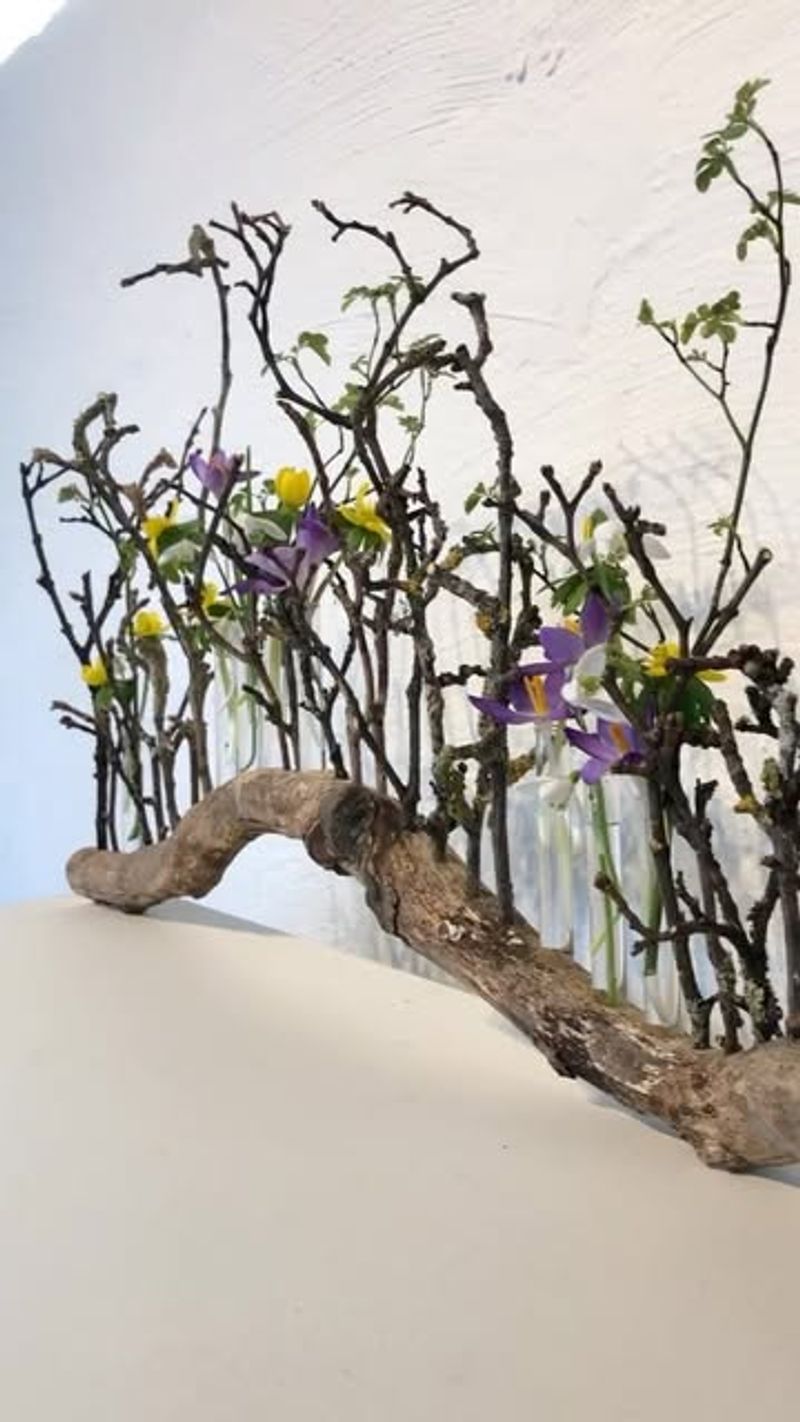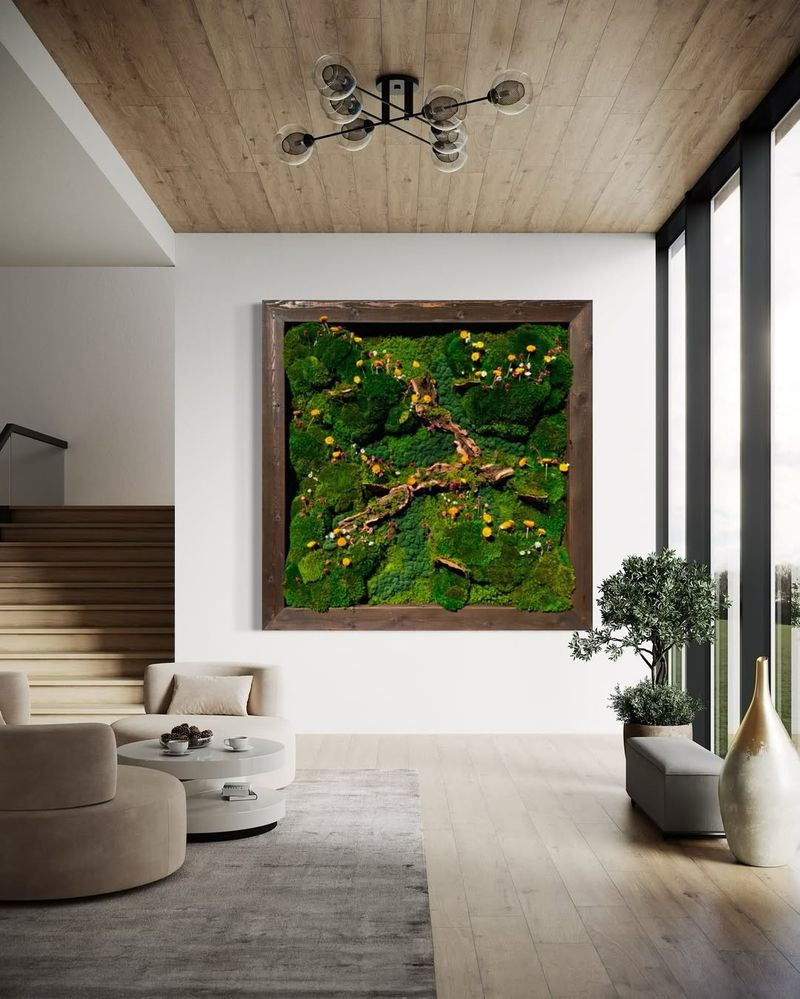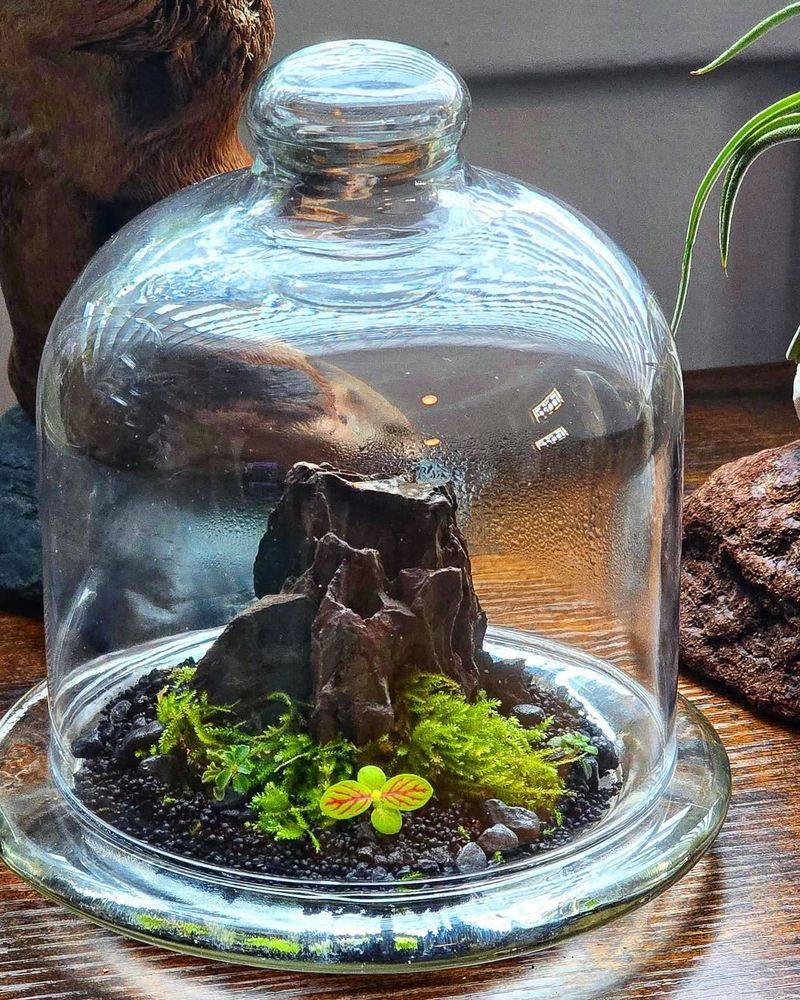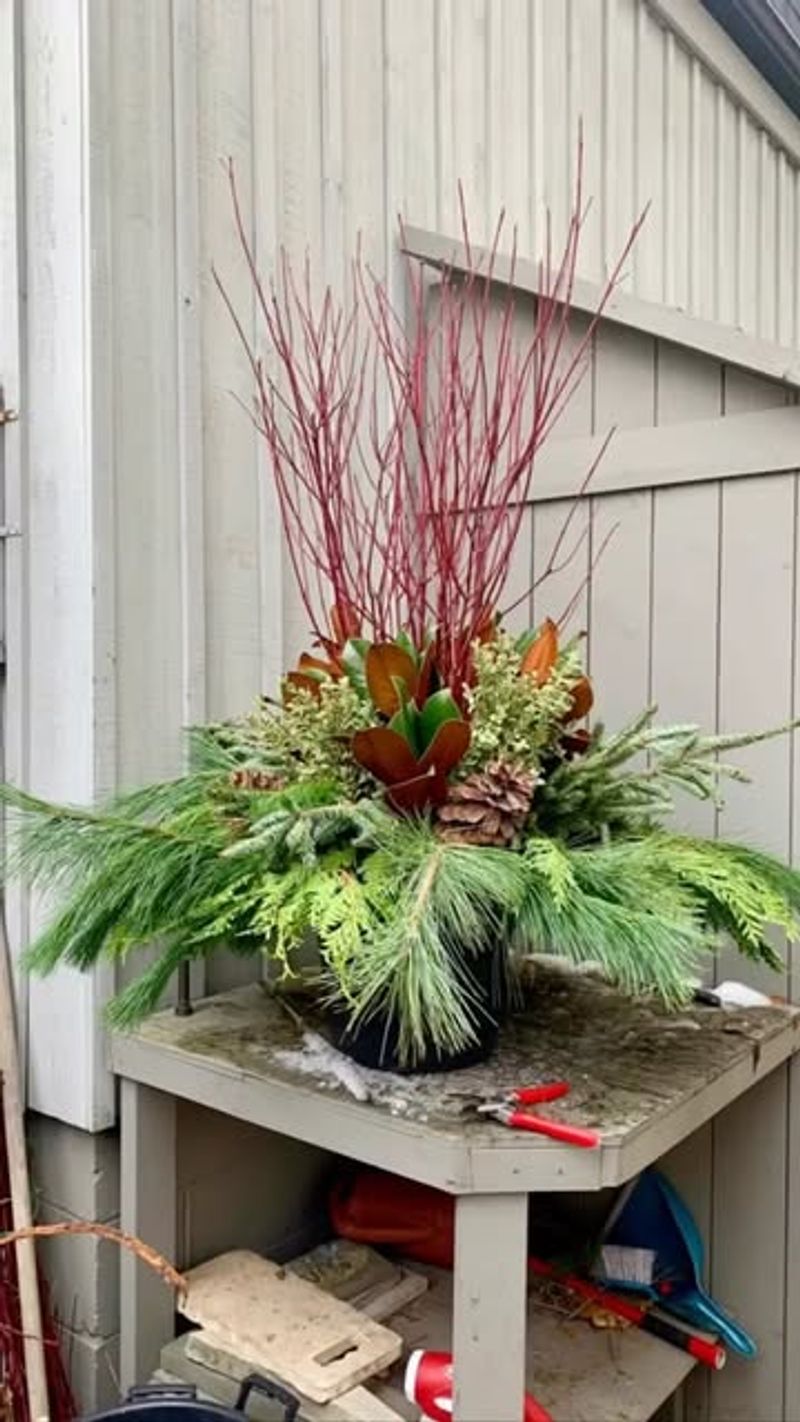Oregon’s eco-gardens showcase how plants can transform any space into a natural sanctuary. These innovative gardens blend sustainability with beauty, creating spaces that feel alive and connected to nature. They’ve inspired countless home decorators to bring the outside in.
Walking through Portland’s botanical gardens last summer, I noticed how simple greenery redefined even the smallest spaces. The clever use of native plants and repurposed materials made me rethink my own home’s potential. These gardens aren’t just beautiful—they’re practical blueprints for eco-friendly living.
Ready to refresh your home with nature-inspired touches? Here are fifteen decor ideas straight from Oregon’s most stunning eco-gardens that will breathe life into your space while honoring sustainable principles.
1. Living Wall Tapestries
The vertical gardens at Portland’s Eco-Trust building stopped me in my tracks. Unlike traditional art, these living tapestries change with the seasons and purify your air while looking stunning.
Start small with a wooden frame fitted with chicken wire and moss as a base. Add small potted plants like ferns, pothos, and air plants, securing them with more moss or plant-friendly wire.
For maintenance, mist regularly and position in indirect light. The reward is an ever-evolving piece of natural art that brings Oregon’s lush forest feeling right into your living room.
2. Terrarium Coffee Tables
During my visit to Eugene’s Glass Garden, I fell in love with their terrarium displays. Imagine that same magic as your coffee table centerpiece – a miniature ecosystem under glass that becomes a conversation starter.
Find a clear-topped coffee table or repurpose an old aquarium. Layer pebbles, charcoal, and soil before adding small woodland plants like mosses, tiny ferns, and miniature figurines for whimsy.
The sealed environment creates its own little water cycle, requiring minimal care while bringing the forest floor indoors. Oregon garden enthusiasts often include tiny native plants for authenticity.
3. Hanging Kokedama String Gardens
My first encounter with kokedama was at Portland’s Japanese Garden – moss balls with plants growing from them, suspended like natural ornaments. The effect was magical and surprisingly simple to recreate.
Wrap plant roots in moss and bind with string, creating earthy spheres that can hang from ceiling hooks or sit in shallow dishes. Ferns, spider plants, and small philodendrons work beautifully.
Arrange them at varying heights for a cascading effect reminiscent of Oregon’s misty forests. The best part? These require just weekly soaking and occasional misting, making them perfect low-maintenance decor for busy households.
4. Native Plant Centerpieces
Wandering through Salem’s Deepwood Estate gardens showed me how local plants create the most authentic table displays. Forget imported flowers – Oregon’s native species offer year-round beauty.
Arrange small potted native ferns, miniature evergreens, and woodland flowers in a reclaimed wood tray. Between dinner parties, these living centerpieces continue thriving near a window.
Switch plants seasonally – trilliums and bleeding hearts in spring, wild strawberries in summer, and colorful lichen-covered branches in fall. Unlike cut flowers, these centerpieces last for months with minimal care while celebrating local ecology.
5. Reclaimed Wood Plant Shelves
The Portland EcoGarden Center’s display of plants on weathered dock boards caught my eye immediately. Those silver-gray planks with their rich history made perfect shelving for cascading greenery.
Look for driftwood, barn wood, or reclaimed lumber at salvage yards. Mount these treasures as floating shelves using hidden brackets, then line with small plants that trail downward like string of pearls or pothos.
Each shelf becomes a living story – the wood’s past life meeting new growth. Position near east or west windows where morning or late afternoon light creates dramatic shadows through the leaves.
6. Dried Botanical Art Displays
Last autumn, the pressed flower exhibition at Eugene’s Mount Pisgah Arboretum transformed my understanding of botanical art. Preserved nature can be just as striking as living plants when displayed thoughtfully.
Collect fallen leaves, ferns, and flowers from your garden or nature walks. Press between heavy books for two weeks, then arrange in simple glass frames against white backgrounds for dramatic effect.
Group frames in a gallery wall arrangement, mixing in small mirrors to reflect light and living plants. The preserved specimens capture fleeting natural beauty while requiring zero maintenance – perfect for plant lovers with busy schedules.
7. Moss-Covered Stone Planters
Walking through Oregon’s coastal gardens, I noticed how stone containers blanketed with moss created an instant sense of age and permanence. That weathered, timeless quality is surprisingly easy to bring indoors.
Start with plain concrete or stone planters. Mix yogurt or buttermilk with collected moss fragments in a blender, then paint this mixture onto the containers and keep moist until established.
The living patina transforms ordinary planters into ancient-looking vessels that seem plucked from a forest floor. Place these in bathrooms or kitchens where humidity helps the moss thrive while softening architectural lines.
8. Indoor Miniature Water Gardens
The water feature displays at Portland’s Chinese Garden inspired me to create scaled-down versions for tabletops. Small water gardens bring a sense of tranquility that no other decor element quite matches.
Select a shallow, watertight container with some width. Add small water plants like miniature water lilies or floating ferns, a few polished stones, and perhaps a tiny recirculating pump for gentle movement.
Place your creation where afternoon sun creates dancing reflections on nearby walls. The subtle sounds and movement create a meditative focal point that helps reduce stress while referencing Oregon’s abundant waterways and rain-nourished landscape.
9. Botanical Room Dividers
At Eugene’s Cascades Raptor Center, I admired how they used plants as natural partitions between spaces. The technique works beautifully in open-concept homes needing subtle area definition.
Arrange tall plants like bamboo, reed palms, or snake plants in a row using matching containers. For added structure, place plants on a narrow console or connect containers with a wooden planter box.
Unlike solid dividers, these living boundaries filter light while improving air quality. They create privacy without blocking natural light flow – a signature element in Oregon’s indoor-outdoor spaces where boundaries intentionally blur between nature and living areas.
10. Foraged Branch Installations
The fallen branch sculpture at Silverton’s Oregon Garden revolutionized my thinking about natural decor. What looks like trash in the forest becomes treasure when thoughtfully displayed indoors.
Collect interesting branches during forest walks (always respecting park rules). Clean thoroughly, then suspend horizontally from ceiling hooks using clear fishing line for a floating effect.
Enhance with small air plants, hanging crystals, or LED fairy lights for evening ambiance. The installation creates dramatic shadows while introducing organic architecture to your space – a nod to Oregon’s windswept coastal forests where nature creates its own artistic arrangements.
11. Edible Windowsill Gardens
The teaching kitchen at Portland’s Learning Garden Laboratory showed me how beauty and function merge perfectly in windowsill herb gardens. Fresh flavors within arm’s reach transform cooking while adding living decor.
Line sunny windowsills with small pots of culinary herbs like basil, thyme, and chives. Arrange by height or color for visual interest, using matching containers or an eclectic mix of vintage vessels.
Morning light through the leaves creates gorgeous shadows while releasing herbal fragrances. Unlike purely decorative plants, these edible landscapes connect you to Oregon’s farm-to-table culture every time you snip fresh herbs for cooking.
12. Preserved Moss Wall Art
During a rainy day visit to Cannon Beach’s art galleries, I discovered the stunning potential of preserved moss as wall art. Unlike living moss, these preserved versions require zero maintenance while delivering maximum visual impact.
Purchase preserved moss sheets online or at craft stores. Cut into geometric shapes or silhouettes, then mount on painted canvas or wood backing for striking textural contrast.
The deep greens and varied textures create a sensory experience that references Oregon’s lush forest floors without the upkeep. Position these pieces where you can occasionally touch them – the tactile quality connects you to nature even when you’re indoors.
13. Glass Cloche Plant Displays
The Victorian-inspired glass displays at Salem’s historic Deepwood Estate gardens revealed how simple glass covers transform ordinary plants into museum-worthy specimens. There’s something magical about plants under glass.
Place small ferns, air plants, or flowering miniatures on wooden bases, then cover with glass cloches or repurposed large jars. The enclosed environment creates higher humidity that many plants love.
Group several at different heights on a sideboard or mantel for maximum impact. The glass magnifies plant details while keeping dust away – perfect for highlighting special specimens like those found along Oregon’s misty coastal trails.
14. Seasonal Branch Arrangements
At Portland’s Leach Botanical Garden, bare winter branches in tall vases demonstrated that plants need not be green or flowering to make powerful decor statements. The stark silhouettes were breathtaking.
Collect interesting branches – curly willow, red twig dogwood, or fruit tree cuttings. Stand them in tall cylindrical vases filled with decorative stones to stabilize.
Change selections seasonally – flowering branches in spring, leafy stems in summer, colorful foliage in fall, and architectural bare branches in winter. These dramatic vertical elements draw the eye upward while connecting your home to Oregon’s seasonal rhythms.

